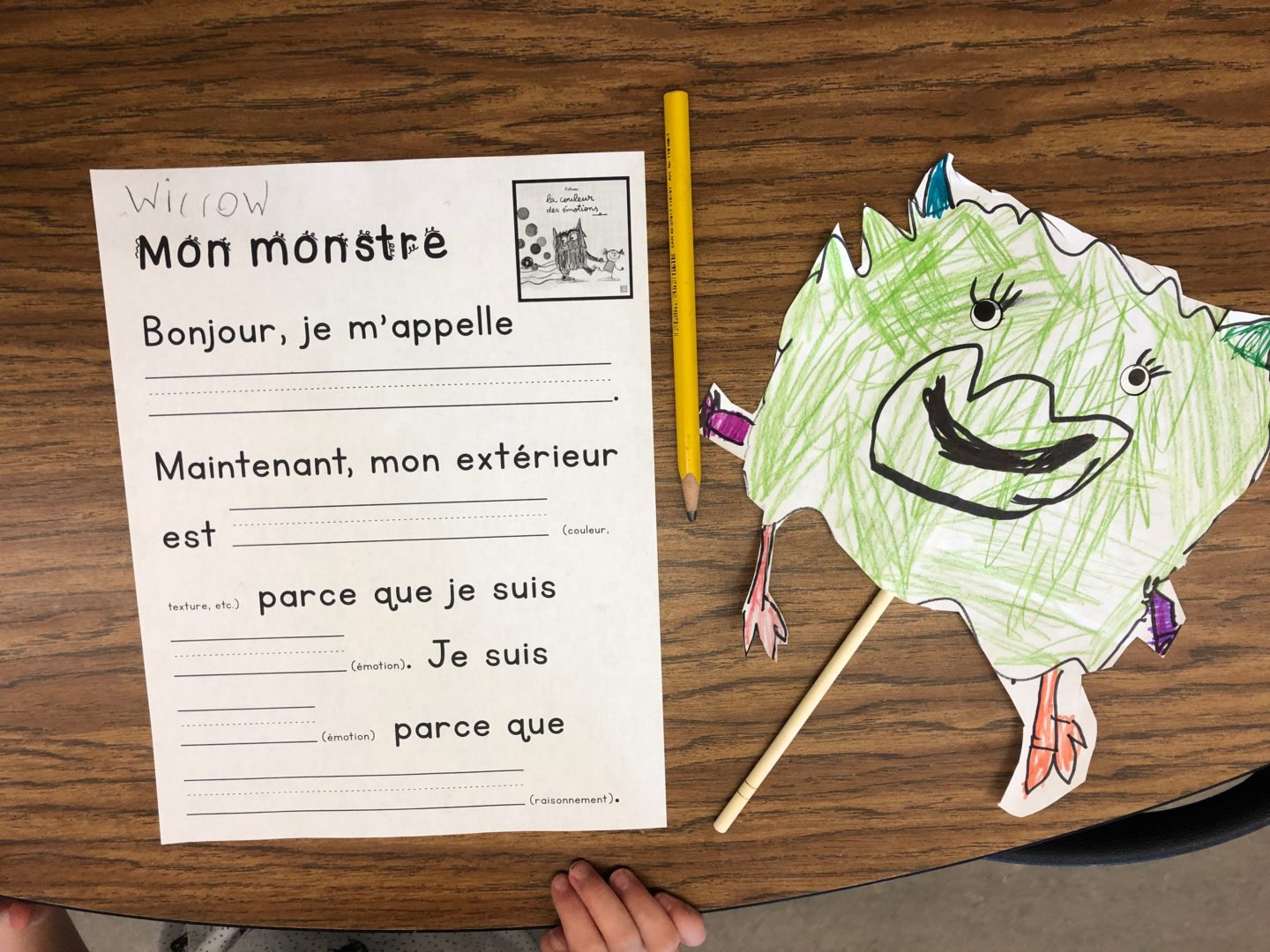
Feeling Monsters: Let’s Talk About Feelings
Teaching emotive language is essential. This empowers learners to can better use their new language to communicate thinking and feeling. Learners need to feel confident they can express what is on their heart long before we can consider imposing « target language only » restraints on their communication. Research shows that many French language learners lack sociolinguistic competence when compared with L1 speakers of French. As teacher, there are many ways I can help my learners build their skills in this area. Learning about emotive language is only a small piece of this learning, but it is a good place to start.
Social-emotional learning is hugely important for kids as humans, and I’m grateful to see a more holistic approach to education which teaches to the heart as well as the body and the mind.
Learning about emotions gets a lot of attention in English in our schools. This social-emotional learning is hugely important for kids as humans, and I’m grateful to see a more holistic approach to education which teaches to the heart as well as the body and the mind. In this classroom, as a language teacher, I have to work extra hard to piggy-back this social-emotional learning in French so that the learning can happen in tandem, not in solely translation. I know what the research shows about the lagging skills in sociolinguistic competence. Understanding the words is not enough, kids need to feel confident and capable using them in their charged moments. This is not an easy task. There are so many ways to approach this learning, and I don’t believe there is a singular best way. My approach is simply to keep doing something. This learning needs air time in our classrooms all year long.
So, how am I giving this learning air time right now? With a collaboration project! In library time, our teacher-librarian read the story « The Colour Monster » by Anna Llenas. She used this book as a jumping off point to make feeling monsters. Luckily for me, I work with a TL who hears me when I say the language learning is important. She approached me to see if I might want to work together with her to have the kids make Chatterpix videos about their feeling monsters in French (instead of doing it in English during their library time). This is the kind of offer that lights up a language teacher’s soul! I was so excited by the request because it matched up perfectly with the section on emotions in our Roots of Empathy program. I was eager to show her the feelings posters we had just finished making using PicCollage of the kids’ feeling faces. Understanding the feeling words is not the same as using the words though, so we need to get intentional about creating opportunities to speak. We also need our schools to take steps to reflect the value of the language outside of the four walls of the language classroom. This collaboration is a win, win, win!
How did we do it? Step 1, I listened to the TL share about her vision. The teacher-librarian and I opted for a semi-scripted approach to the Chatterpix videos. This way our learners can go into the recording with a plan that matches the vision the TL originally had for the project and the supports their language learning needs.
Step 2, I ordered the book in French from Archambault. Why do I mention this? If you’re a language teacher you are probably nodding your head and cracking a smile right now. Time and again we find ourselves playing catch-up in the resource department. This is our reality. I’m not about the wait for the book to arrive though, and my learners have already finished their monsters! Reading the story in French once it arrives will be like the icing on the cake.
The feeling monsters have an outside appearance, an inside feeling, and a reason for feeling the way they do at a given moment in time. Since we all experience the full range of emotions at one time or another, the outside appearance of a feeling monster is like a reverse chameleon. It changes its outside to match not its outside surroundings, but its inside feelings. For the video recordings, we created an open-ended script (click to download):
« Bonjour, je m’appelle ______. Maintenant, mon extérieur est ______________ (couleur, texture, etc.) parce que je suis ____________ (émotion). Je suis __________ (émotion) parce que _____________________ (raisonnement). »
The constraints of a script are enabling for learners who need a little support to get started. Some of you might be wondering about the choice of the word extérieur – this is kindergarten! Since I do so much teaching around opposites, this is not a new word (intérieur/extérieur). This project is about expressing feelings, I am not trying to pack in additional new language learning here (the script only contains previously introduced words). For learners who are confident with spontaneous speech at this point in the year can really let loose and share their thinking. Below I have shared three videos, each one depicting a different emotion.
Happiness
Sadness
Anger
A beautiful, interactive story about a monster who is learning to sort out his feelings. This one is perfect for shared reading and read-alouds.

This version of the story is perfect for the classroom library! Without the delicate pop-ups, I don’t have to feel worried my eager readers will break or damage this version.
